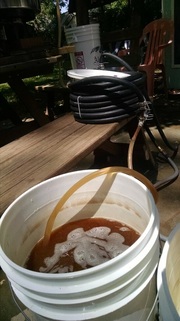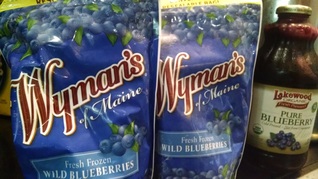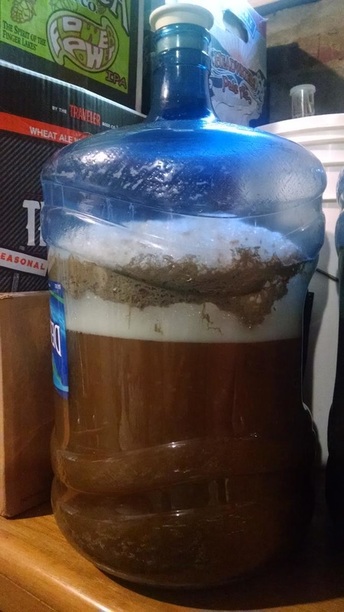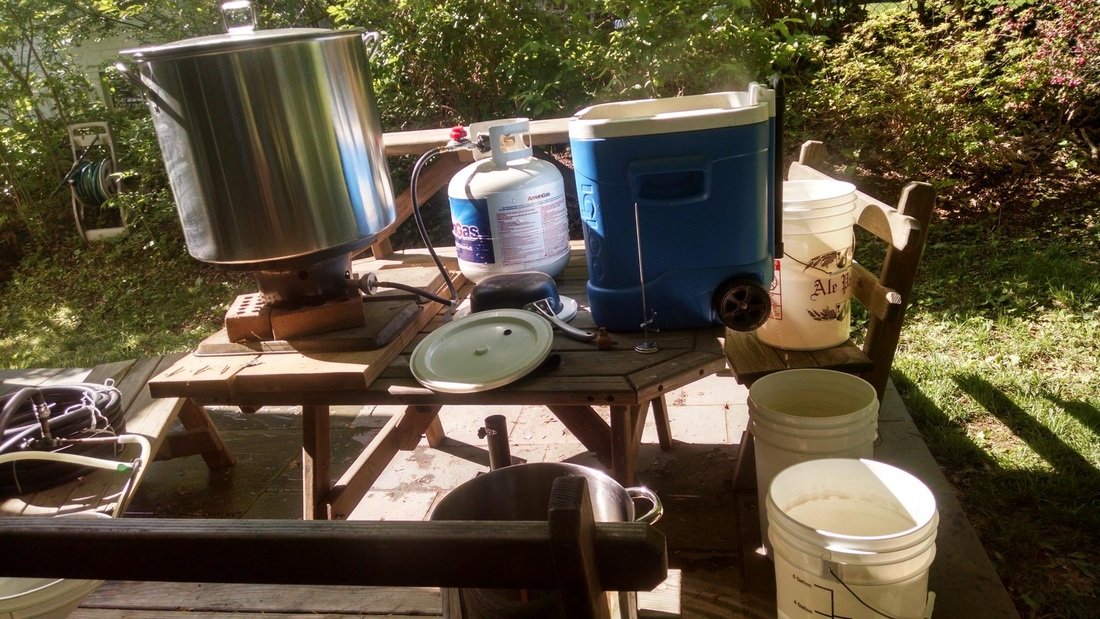|
Wheat! Oh, you crazy grain. You who demand harvest and threshing and grinding, and have become our most common bread grain. To Americans, wheat recalls summer through those classic images of large but trim and well-dressed Midwestern farmers driving their wide-body tractors through fields of glimmering, golden grain, backed by a pleasantly warming sun, the stalks bent by a hint of wind. For those who have lived in the Midwest, of course, this image is laughable, as the reality is that the pleasantly warming sun lives in April and May, when the cracked and broken remains of last year's crop have been turned up and covered in manure -- with all the sensory interest that entails -- so that this year's crop can emerge swiftly from the earth. The tractors come out in mid-summer, and the farmers who tend their crop aren't wearing a set of pristine coveralls and a flannel shirt, but have stripped their work shirt off and are covered in sweat and gnats, their scuffed work boots coated in mud and manure, their hat brims frayed.  Be that as it may, I hereby bow to this mysterious summer exaltation of wheat, as well as to my wife's predilection for a blueberry wheat I brewed a couple years ago for my sister-in-law's wedding. A note, though, about the process here. I rarely brew wheat beers, as I find wheat beer yeasts somewhat fussy. While many feel that "typical ale" yeasts present opportunity for "off" flavors -- which they do over a range of temperatures -- most wheat ale yeasts are harder to manage in my setup. At lower temperatures -- in the mid-60s -- they might act like US05 (a neutral yeast at temps from the low-60s to about 71F); at higher temperatures, though, banana and clove and citrus and other strange scents and flavors manifest. These higher temperatures start from the high-60s, and they build aggressively. Last time I brewed the blueberry, it wasn't technically a wheat, it was a witbier. The difference? The type of wheat used, the type of yeast used, plus the active addition of citrus and coriander to the wort at or near flameout in the wit. Blueberry took over that flavoring, lending a wonderful smell without the fruit sweetness (it's fermentable sugar too!) -- which had to be added back in during bottling. This time, I didn't want to go through the witbier spicing. I wanted citrus without the banana and clove, but I also prefer a relatively clean product with a little bit of wheat backbone and yeast falling out to give some haze. With no further ado, then, I present the summer wheat series:
0 Comments
Leave a Reply. |
AuthorA bike-riding brewer. Archives
September 2016
Categories
All
|




 RSS Feed
RSS Feed
